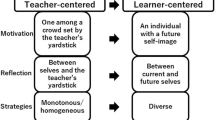Abstract
Medical school is an academic and developmental path toward a professional life demanding self-regulation and self-education. Thus, many medical schools include in their goals for medical student education their graduates' ability to self-assess and self-regulate their education upon graduation and throughout their professional lives. This study explores links between medical students' use of self-regulated learning as it relates to motivation, autonomy, and control, and how these influenced their experiences in medical school. Subjects were medical students in two distinct medical school environments, “Problem-based learning” and “Traditional.” PBL students described a rough transition into medical school, but once they felt comfortable with the autonomy and control PBL gave them, they embraced the independence and responsibility. They found themselves motivated to learning for learning's sake, and able to channel their motivation into effective transitions from the classrooms into the clerkships. Traditional students had a rougher transition from the classrooms to the clerkships. In the first two years they relied on faculty to direct and control learning, and they channeled their motivation toward achieving the highest grade. In the clerkships, they found faculty expected them to be more independent and self-directed than they felt prepared to be, and they struggled to assume responsibility for their learning. Self-regulated learning can help smooth out the transitions through medical school by preparing first and second year students for expectations in the third and fourth years, which can then maximize learning in the clinical milieu, and prepare medical students for a lifetime of learning.
Similar content being viewed by others
References
Boud D. (1998). Developing Student Autonomy in Learning. New York, Nichols
Candy, P. (1981). Mirrors of the Mind: Personl construct Theory in the Training of Aduit Educators. Manchester: Dept. of Adult and Higher Education, University of Manchester.
Candy P. (1998). On the attainment of subject matter autonomy. In: David Boud (ed.), Developing Student Autonomy in Learning. New York, Kogan Page, London/Nichols Publishing, pp. 59–76
Entwistle N.J., Ramsden P. (1983). Understanding Student Learning. London, Croom Helm
Gruppen L.D., White C., Fitzgerald J.T., Grum C.M., Woolliscroft J.O.. (2000). Medical student self-assessment and allocation of learning timeAcademic Medicine 75(4): 374–379
Hagen A.S., Weinstein C.E. (1991). Achievement goals, self-regulated learning, and the role of the classroom context. In: P.R. Pintrich (ed.), Understanding Self-regulated Learning. San Francisco, CA: Jossey Bass, pp. 43–55
Kerssen-Griep J., Hess J.A., Trees A.R. (2003). Sustaining the desire to learn: dimensions of perceived instructional facework related to student involvement and motivation to learnWestern Journal of Communication 67(4): 357–370
Krathwohl D.R. (1998). Methods of Educational and Social Science Research: An Integrated Approach (2nd) edn. New York, Longman
Lowenthal W. (1981). Continuing education for professionals: voluntary or mandatory?Journal of Higher Education 52(5): 519–538
Paris S.G., Paris A.H. (2001). Classroom applications of research on self-regulated learningEducational Psychologist 36(2): 89–101
Pintrich P. (1995). Understanding Self-regulated Learning. San Francisco, Jossey Bass
Sewell, M. (2005). The Use of Qualitative Interviews in Evaluation. The University of Arizona. Available at: http://ag.arizona.edu/fcs/cyfernet/cyfar/Intervu5.htm. Accessed March 14, 2005
Sullivan M.E., Hitchcock M., Dunnington G.L. (1999). Peer and self assessment during problem-based tutorialsThe American Journal of Surgery 177: 266–269
Trawick L., Corno L. (1995). Expanding the Volition Resources of Urban Community College Students. In: P.R. Pintrich (ed.), Understanding Self-regulated Learning. San Francisco, Jossey Bass, pp. 57–70
Ward M., Gruppen L.D., Regehr G. (2002). Measuring self-assessment: current state of the artAdvances in Health Sciences Education 7: 63–80
Zimmerman B.J., Paulsen A.S. (1995). Self-monitoring during college studying: An invaluable tool for academic self-regulation. In: P.R. Pintrich (Ed.), Understanding Self-regulated Learning. San Francisco, CA: Jossey Bass, pp. 13–27
Zimmerman B.J., Bonner S., Kovach R. (1996). Developing Self-regulated Learners: Beyond Achievement to Self-efficacy. Washington, D.C.: American Psychological Association
Zimmerman B.J. (2000). Attaining Self-regulation: a Social-cognitive perspectives. In: M. Boekaerts, P.R. Pintrich, M.H. Zeidner (Eds.), Handbook of Self-regulation. San Diego, CA: Academic Press, pp. 13–39
Author information
Authors and Affiliations
Corresponding author
Rights and permissions
About this article
Cite this article
White, C.B. Smoothing Out Transitions: How Pedagogy Influences Medical Students’ Achievement of Self-regulated Learning Goals. Adv Health Sci Educ Theory Pract 12, 279–297 (2007). https://doi.org/10.1007/s10459-006-9000-z
Received:
Accepted:
Published:
Issue Date:
DOI: https://doi.org/10.1007/s10459-006-9000-z




